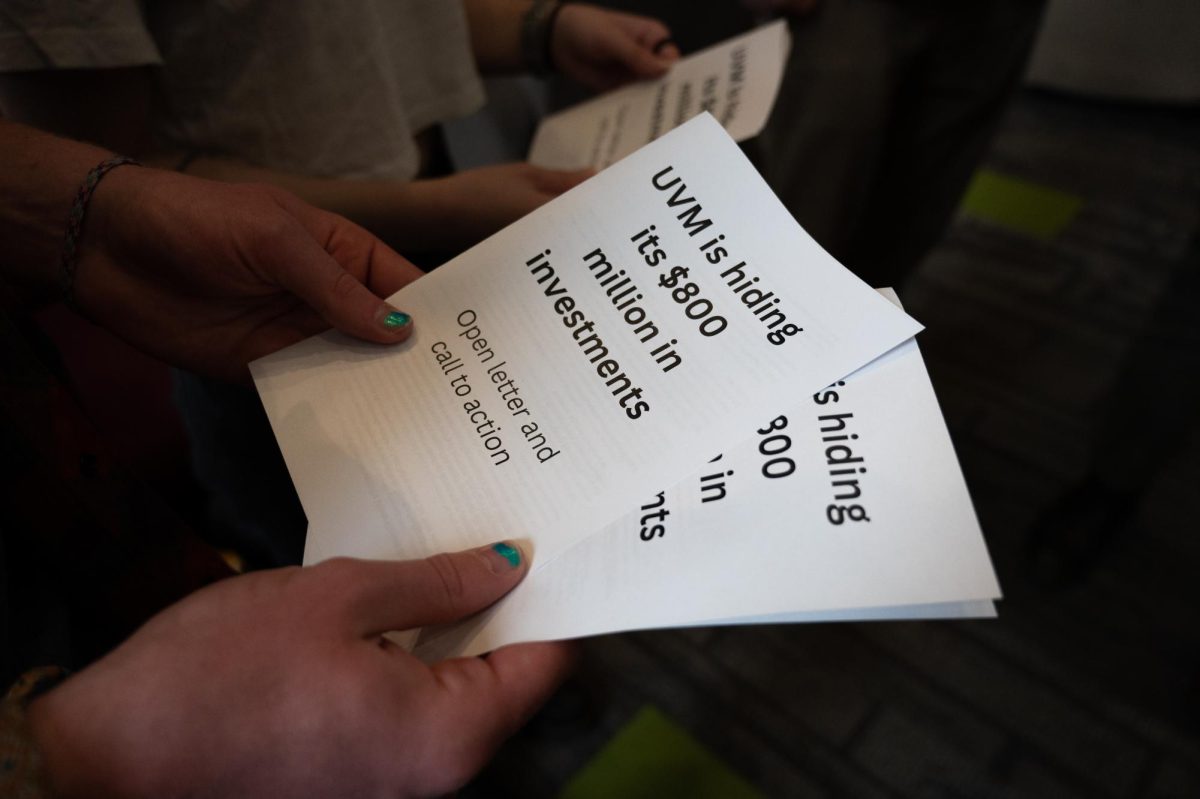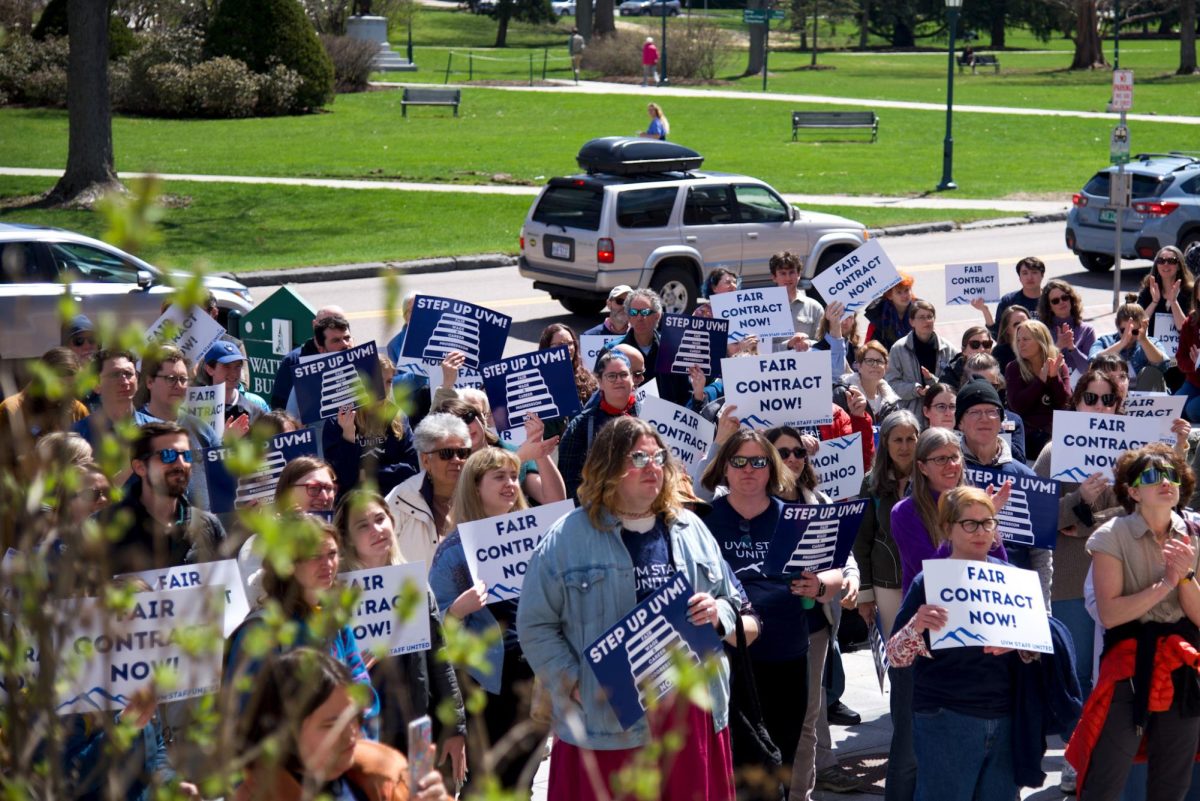Architects Chosen for ‘Greening Aiken’ Building Redesign
William Maclay Architects and Planners of Waitsfield was chosen to redesign and expand the George D. Aiken Center, home to the Rubenstein School of Environment and Natural Resources. Donald DeHayes, dean of the school, announced the results of the design competition this week. Maclay’s nine-person team was among 24 architectural firms who vied for the honor. In May, more than 100 students, faculty, staff and others took part in a two-day design competition in which the top four firms presented design concepts for the building redesign project, which the school calls the “Greening of Aiken.” “We selected William Maclay Architects as our partners because they’re an experienced, nationally recognized Vermont company whose design ideas, ‘green’ approach and willingness to work with our faculty, staff and students to create the final plans are consistent with our goals,” said Professor Alan McIntosh, who is spearheading the project. “Together we will develop an exciting green design for the building and the systems to operate it. Most importantly, we will create an active learning center that integrates the building into the curriculum.” “In 1980, the Aiken Center was built to accommodate a school of 350 students and 30 faculty and staff,” said DeHayes. “Today, the Rubenstein School of Environment and Natural Resources has 60 faculty and staff and more than 600 students, and the building’s systems are near the end of their lifespan. We have an opportunity, using environmentally friendly, efficient and sustainable materials and technologies, to bring this building into the future. I envision Aiken as a nationally recognized ‘green beacon’ that calls attention to the importance of the environment at UVM and uses the designing and building process as part of our curriculum.” Maclay is no stranger to environmental and educational design or building requirements for cold climates. Among its projects are the offices of Wind NRG Partners in Hinesburg, a St. Lawrence University wetlands research building in Canton, N.Y., Yestermorrow Design Build School in Warren and the Inn of the Six Mountains in Killington. “We’re excited to work with UVM on this important building. We feel that together we can use the Aiken Center to change how people think about the environment, and to realize that we live in nature whether we’re outdoors or inside a building,” said William Maclay. “It is particularly exciting that this facility is the home of UVM’s Rubenstein School of Environment and Natural Resources.” The design concept competition was the culmination of nearly two years of work by students, staff, faculty and UVM’s Architectural and Engineering Services. The Greening of Aiken competition and initial phase was funded by a generous gift from the Lintilhac Foundation. Now the school’s faculty, staff and students will work with the Maclay team and UVM Architectural and Engineering Services to develop an initial design and budget. An intensive fundraising campaign has also begun. Undergraduate and graduate students are already investigating green technologies and materials and a related cost-benefits analysis class is beingdeveloped for spring 2005.
New System Aims to Give Hall Residents More Authority, Accountability
When UVM’s new director and associate director of residential life arrived on campus last year, they found halls where residents sometimes didn’t know the names of their neighbors, much less their residential advisors, and would often call the campus police over matters as trivial as a too-loud stereo. Stacey Miller and Alvin Sturdivant were appalled at their walk-throughs and survey results and decided to bring in a new model for running the halls. Called the community standards process, the recently adopted system gives students more autonomy – and responsibility. Developed at the University of Nevada at Las Vegas, it’s also been implemented to good reviews at Syracuse, New York University and the University of Virginia. “We’ve clearly had some image problems,” says Miller, the director of residential life. “We’re making significant changes now to try our very best to bring a different level of community to halls.” Along implementing the new philosophical model this semester, Miller and Sturdivant also boosted the programming budget, mandated that residential advisers hold at least one community activity (whether a meeting, forum or social event) per week, and screened and trained new R.A.’s with the process in mind. So far, results look good. Drug and alcohol incidents are down this year as opposed to this time last year and participation at events is up. “The new process shifts our role in residential life from being authorities to facilitators. We’re empowering students,” Sturdivant says. “It’s also a shift from us creating experiences for students to them creating their own experiences. What is important is that the student is actively engaged.” Community standards are agreements shared by students in residence halls. They define how individuals will treat each other and their environment, celebrate successes and address behavioral problems. What’s different here is that the standards come from the students themselves. Within the bounds of preexisting policy, the residential community decides on rules and enforcement through consensus. This brings students closer together – whether they travel as a floor to a field hockey match to celebrate a neighbor’s athletic prowess, or lay down the law on a noise-making room – and that improves the environment. Sturdivant and Miller say it will take a year or two for the program to take off and for the new process and expectations to become engrained in hall culture.
















